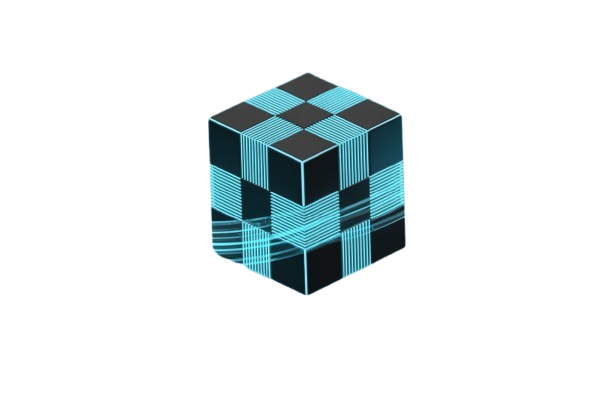Introduction: Why Hardware Spend Analysis Matters
Ever wonder where all the money goes when running massive AI models like DeepSeek? If you’ve peeked into the world of machine learning and artificial intelligence, you know that performance doesn’t come cheap. Hardware isn’t just an expense—it’s the backbone of the whole operation. But spending smartly? That’s an art and a science. Let’s dive into the nuts and bolts of DeepSeek’s hardware spend analysis and unpack what makes or breaks a successful AI infrastructure.
What Is DeepSeek?
A Quick Snapshot of DeepSeek
DeepSeek isn’t just any AI project—it’s a sophisticated engine designed to power deep learning models with blazing speed and accuracy. Think of it as a Formula 1 car in the AI race. And like any high-performance machine, it demands top-notch hardware.
Core Hardware Needs of DeepSeek
To keep DeepSeek humming, it requires a meticulously designed setup of GPUs, high-speed storage, resilient cooling systems, and high-bandwidth networking. We’re talking serious computing muscle here—because milliseconds matter when you’re training large language models or fine-tuning deep neural networks.
The Importance of Hardware Spend Analysis
Why You Should Track Hardware Expenses
Here’s the thing: if you don’t know where your money’s going, you’re already losing it. Tracking hardware expenses isn’t just accounting—it’s about making strategic decisions that improve performance, efficiency, and scalability.
How Mismanagement Affects ROI
Overbuying leads to underutilization. Underbuying? Bottlenecks galore. Either way, you’re bleeding cash. Smart analysis ensures every dollar spent translates into compute power, not dust-collecting devices.
Key Components of DeepSeek’s Hardware Stack
GPUs and TPUs: The Real Power Players
Let’s face it—GPUs are the rockstars of the AI world. DeepSeek relies heavily on NVIDIA’s A100s or H100s (depending on the use case) and possibly integrates TPUs for specialized tasks.
Popular Choices in AI Workloads
- NVIDIA A100/H100: Optimal for training massive models
- TPU v4: High-performance Google hardware used in specific training scenarios
Data Storage Infrastructure
Data is the fuel. And DeepSeek stores petabytes of it. High-speed NVMe SSDs, tiered storage strategies, and distributed file systems like Lustre or Ceph are the norm here.
Network and Cooling Systems
You can’t ignore what keeps everything flowing and cool. DeepSeek’s network backbone likely includes InfiniBand connections for low latency and high bandwidth. Cooling? We’re talking liquid-cooled racks, not fans blowing in a closet.
The Cost Breakdown: Where the Money Goes
CapEx vs OpEx in AI Infrastructure
Capital expenditures (CapEx) include hardware purchases—servers, GPUs, switches. Operational expenditures (OpEx) involve maintenance, power, cooling, and staff. DeepSeek carefully balances both for a lean yet powerful setup.
Most Expensive Hardware Assets
Top three spenders?
- GPUs (up to $30K each)
- Custom cooling systems
- High-speed storage arrays
Hidden Costs Often Overlooked
Let’s not forget power consumption, rack space, software licenses, and downtime. These “invisible” costs can make a surprising dent in your budget.
DeepSeek’s Strategy for Smart Hardware Spending
Vendor Negotiation and Partnerships
DeepSeek doesn’t just shop—they negotiate. Bulk deals, strategic alliances with hardware providers, and beta testing new tech all help slash costs.
Predictive Analytics for Procurement
Using AI to power AI? You bet. DeepSeek leverages analytics to forecast hardware needs based on workload trends and model scaling.
Hardware Lifecycle Management
They don’t just buy and forget. Every piece of gear is tracked from deployment to decommission. This ensures timely upgrades and avoids performance lags.
Challenges in Hardware Spend Optimization
Scaling vs. Budget Constraints
Growth is great, but it comes with price tags. DeepSeek constantly juggles performance scaling without bloating the budget. Not easy!
Keeping Up with Rapid Tech Evolution
The tech landscape moves fast. What’s cutting-edge today is old news tomorrow. Staying ahead without overcommitting is a delicate dance.
Tools and Metrics Used in DeepSeek’s Spend Analysis
KPI Examples for Hardware ROI
- Cost per training run
- Energy usage per model
- Utilization rates of GPUs over time
These metrics give a clearer picture of what’s working—and what’s wasteful.
Software Tools That Help Track Spend
Think tools like:
- Grafana/Prometheus for system monitoring
- Cloud health dashboards
- Custom MLops dashboards with spend tracking modules
Lessons Learned from DeepSeek’s Spending Model
Cost Efficiency vs. Performance
DeepSeek doesn’t always chase the fastest hardware—they chase the most efficient combo of speed, cost, and longevity.
Investing in Scalability
They’ve learned to build for tomorrow, not just today. Investing in scalable architecture saves money in the long run and reduces bottlenecks during rapid growth phases.
Future-Proofing Hardware Investments
Trends in AI Hardware Procurement
- Chiplet architectures
- Liquid cooling
- Composable infrastructure
These are reshaping how AI workloads are powered and financed.
Modular and Sustainable Hardware Approaches
DeepSeek leans into modular designs for easy upgrades and green computing to align with sustainability goals. Less waste, more efficiency.
Final Thoughts
When it comes to DeepSeek, hardware isn’t just a line item—it’s a strategic advantage. By diving deep into every purchase, monitoring usage, and future-proofing their stack, DeepSeek shows that smart spending powers smart systems. Whether you’re a startup building your AI rig or a tech giant scaling to the next level, there’s a lot to learn from their blueprint.
FAQs
1. What is the primary hardware used by DeepSeek?
DeepSeek primarily uses high-end GPUs like NVIDIA A100 or H100 for training deep learning models, along with advanced storage and networking systems.
2. How does DeepSeek manage hardware costs?
They use predictive analytics, vendor partnerships, lifecycle tracking, and robust monitoring tools to optimize spending and performance.
3. Are there hidden costs in AI hardware setups?
Absolutely. Power consumption, software licenses, cooling systems, and underutilized hardware are common hidden costs.
4. How often does DeepSeek upgrade its hardware?
Hardware upgrades are typically based on performance benchmarks and lifecycle analysis, ensuring optimal ROI without unnecessary purchases.
5. What can smaller AI teams learn from DeepSeek?
Even without a massive budget, smaller teams can adopt similar practices: track usage, plan upgrades, negotiate with vendors, and optimize for efficiency—not just power.
